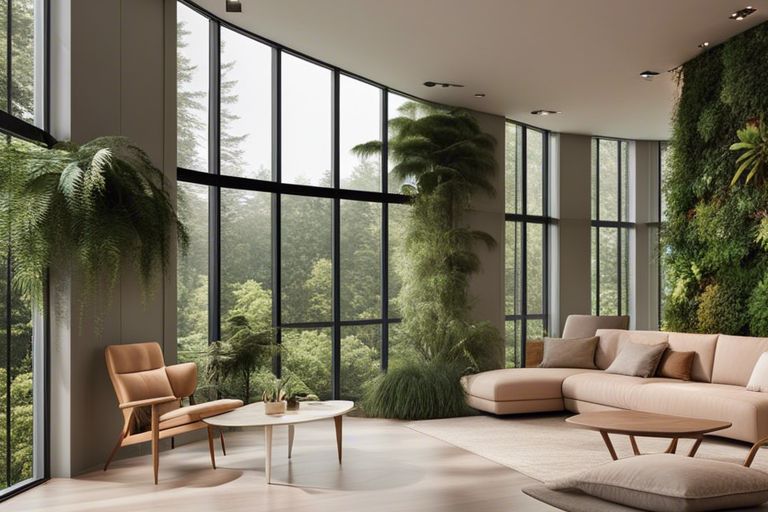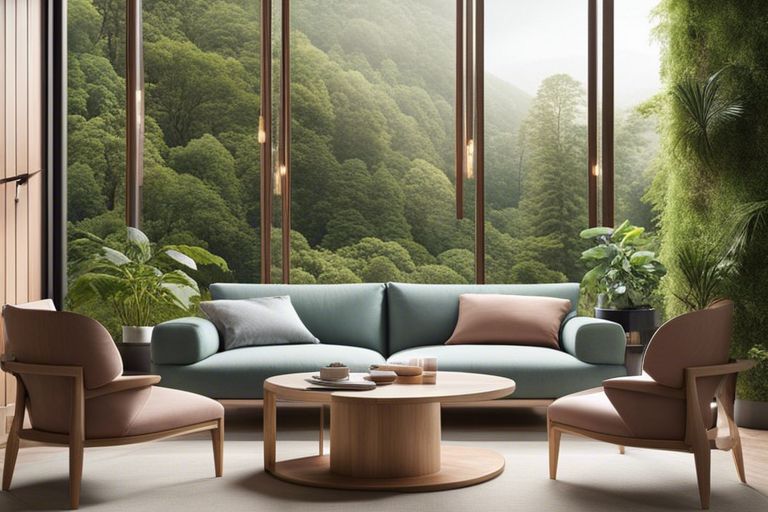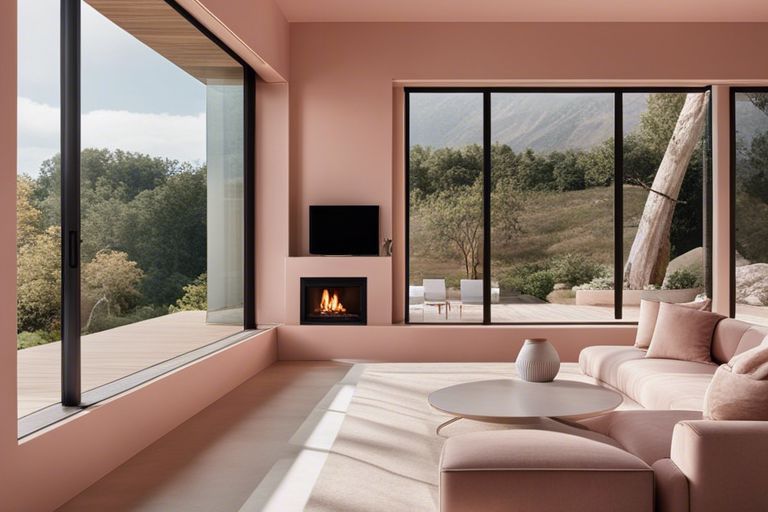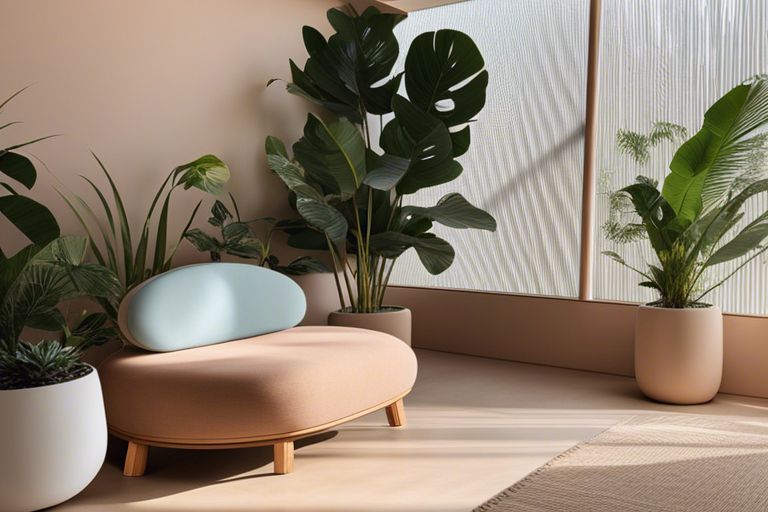Just imagine transforming your home into a relaxing sanctuary that brings the calming and rejuvenating essence of nature indoors. By incorporating natural elements into your home design, you can create a biophilic oasis that promotes a sense of well-being and connection with the outdoors. Follow these simple steps to infuse your living space with the beauty of the natural world.
Key Takeaways:
- Biophilic design: Incorporating natural elements in your home design can improve overall well-being and connection to nature.
- Use of plants: Adding indoor plants can not only enhance the aesthetics of your space but also improve air quality and reduce stress.
- Natural materials: Opt for natural materials such as wood, stone, and bamboo to bring a sense of nature into your home design.

Understanding Biophilic Design
While creating a biophilic oasis in your home, it is crucial to have a good understanding of biophilic design. This design principle seeks to reconnect humans with nature by incorporating natural elements into living spaces to enhance well-being and create a sense of tranquility.
Defining Biophilia and Its Importance
Little do you know that the term “biophilia” stands for the innate human tendency to connect with nature and other forms of life. It is crucial to acknowledge this natural inclination as it plays a significant role in improving your overall mental and physical health. By bringing elements of nature into your home, you can create a harmonious environment that promotes relaxation and reduces stress.
Benefits of Incorporating Natural Elements in Home Design
Some of the benefits of incorporating natural elements in your home design include improved air quality, increased productivity, and enhanced creativity. You will find that having plants, natural light, and organic materials in your living space can have a rejuvenating effect on your well-being.
Design your home with a variety of natural elements such as indoor plants, wooden furniture, stone accents, and water features to reap the full benefits of biophilic design. By incorporating these elements, you can create a peaceful sanctuary that allows you to escape the stresses of daily life and reconnect with nature.
Assessing Your Space
Evaluating Your Home’s Natural Light Exposure
The amount of natural light that enters your home plays a crucial role in creating a biophilic oasis. You should assess the direction of your windows and the quality of light they bring in. Rooms that receive abundant natural light can be ideal for showcasing plants and natural elements. Alternatively, for spaces with limited natural light, consider using light fixtures that mimic natural sunlight to promote a biophilic environment.
Identifying Opportunities for Nature Connection
Homes provide various opportunities to incorporate nature into your interior design. Look around your space and identify areas where natural elements can be integrated. Consider adding indoor plants, a water feature like a small fountain, or natural materials such as wood and stone. These elements can help you establish a deeper connection with nature and create a peaceful sanctuary in your home.
Identifying these opportunities for nature connection is imperative in transforming your space into a biophilic oasis. By strategically placing natural elements throughout your home, you can enhance your well-being and bring the benefits of nature indoors.
Bringing the Outdoors In
Once again, the concept of bringing the outdoors into your home plays a crucial role in creating a biophilic oasis. By incorporating natural elements inside your living space, you can enhance your connection with nature and promote a sense of well-being.
Tips for Incorporating Plants and Greenery
- Integrate plants such as ferns, snake plants, and peace lilies to add a touch of greenery to your interiors.
- Place potted plants near windows or on shelves to allow for natural light to nourish them.
- Hang hanging plants near doorways or corners to create a cascading effect.
Knowing how to properly care for your indoor plants is vital to ensure they thrive and contribute to a healthier indoor environment.
How to Choose the Right Materials and Textures
Outdoors, textures and materials such as wood, stone, and water are prevalent in natural landscapes. Bringing these elements into your home can help create a harmonious connection with nature.
With the right materials and textures, you can achieve a seamless transition between indoor and outdoor spaces, blurring the boundaries and fostering a sense of tranquility within your home.
Strategies for Maximizing Natural Ventilation
With a focus on optimizing airflow and ventilation in your home, you can ensure a constant supply of fresh air and maintain a healthy indoor environment. Incorporating elements such as large windows, skylights, and ventilation systems can help you achieve this.
Plus, embracing cross ventilation by strategically placing windows on opposite walls can create a natural breeze throughout your living space, reducing the need for artificial cooling systems and lowering energy consumption.
Design Elements for a Biophilic Oasis
How to Incorporate Natural Materials and Colors
Not only do natural materials and colors bring a sense of tranquility and calmness to a space, but they also help create a deeper connection to nature in your home design. Wood, stone, bamboo, and jute are excellent choices for incorporating natural materials, adding warmth and texture to your rooms. As far as colors, earth tones like greens, browns, and blues can mimic the outdoor environment and create a harmonious atmosphere.
Factors to Consider When Selecting Furniture and Decor
If you want to enhance the biophilic elements in your home, it’s imperative to choose furniture and decor that align with nature-inspired aesthetics. Natural materials such as reclaimed wood, rattan, or cork can add an organic touch to your space. Consider selecting pieces with simple and clean lines to reflect the simplicity of nature. Avoid synthetic materials and overly processed decor that can disrupt the natural flow of your biophilic oasis. After all, the goal is to create a space that promotes relaxation and well-being.
Creating a Visual Connection to Nature
To truly transform your home into a biophilic oasis, you need to focus on creating a visual connection to nature. Biophilic design emphasizes incorporating natural elements such as indoor plants, natural light, and scenic views to blur the lines between indoors and outdoors. By strategically placing large windows, skylights, and greenery throughout your home, you can invite the outside in and immerse yourself in nature’s beauty.
Lighting Design for a Biophilic Space
How to Optimize Natural Light Exposure
Biophilic design focuses on bringing the outdoors inside, and a crucial aspect of this is maximizing natural light exposure in your living space. Not only does natural light illuminate your rooms and make them feel more spacious, but it also has numerous benefits for your well-being. To optimize natural light exposure, consider using sheer curtains or blinds that allow sunlight to filter through while still providing privacy. Place larger mirrors strategically to reflect natural light further into the room, creating a brighter and more inviting atmosphere.
Using Artificial Lighting to Mimic Nature
Biophilic design also involves using artificial lighting to emulate the patterns and intensity of natural light. This can be achieved through the use of full-spectrum bulbs that mimic daylight, creating a more natural ambiance indoors. This type of lighting can help regulate your circadian rhythm and promote better sleep patterns, just like natural sunlight does.
Tips for Creating a Cozy and Inviting Atmosphere
The key to a biophilic oasis lies in the design details that evoke a sense of nature and tranquility. To enhance the cozy and inviting atmosphere in your home, consider incorporating these tips:
- Integrate warm lighting fixtures such as floor lamps or string lights to create a soft and soothing glow.
- Add natural elements like houseplants, wood accents, or stone decorations to bring a touch of the outdoors inside.
- Use textures inspired by nature such as cozy blankets, fluffy rugs, or woven baskets to enhance the tactile experience of your space.
Recognizing the importance of these small details can truly transform your home into a biophilic sanctuary where you can escape the stresses of daily life and reconnect with nature.
Balancing Technology and Nature
All Your Guide To The Art Of Biophilic Interior Design starts with the concept of balancing technology and nature in your living spaces. It’s important to create a harmonious blend of modern conveniences with natural elements to enhance your well-being and connection to the environment.
How to Integrate Technology in a Biophilic Space
Biophilic design principles can guide you on how to seamlessly incorporate technology into your nature-inspired oasis. You can use smart home devices that mimic natural patterns, such as lighting systems that change in intensity and color temperature throughout the day to mimic the natural daylight cycle. Additionally, you can opt for eco-friendly technology solutions that promote energy efficiency and sustainability, aligning with the ethos of biophilic design.
Factors to Consider When Choosing Sustainable Technology
- Energy Efficiency: Opt for devices that are energy-efficient to reduce your carbon footprint.
- Material Composition: Choose products made from sustainable materials to minimize environmental impact.
- Longevity: Select durable technology that will last longer, reducing the need for frequent replacements.
For any technology you introduce into your home, consider these factors to ensure they align with your biophilic design goals and contribute positively to your living environment.
Strategies for Minimizing Screen Time in the Home
Choosing to minimize screen time in your home is crucial for creating a balanced lifestyle that prioritizes your well-being and connection to nature. By reducing your reliance on electronic devices, you can minimize distractions and create more opportunities for meaningful interactions with your surroundings and loved ones.
Nature can inspire you to engage in activities that promote relaxation and creativity, such as incorporating indoor plants, nature-inspired artwork, or creating dedicated nature zones within your living space.
Conclusion
Taking this into account, by incorporating natural elements into your home design, you can create a biophilic oasis that promotes health and well-being. By bringing in elements such as plants, natural materials, and natural light, you can improve the overall aesthetic of your home while also reaping the benefits of a connection to nature.
Bear in mind, creating a biophilic oasis in your home doesn’t have to be difficult or expensive. Simply by adding a few plants, wooden accents, and allowing natural light to flood your space, you can transform your home into a peaceful and rejuvenating sanctuary. Embrace the beauty of nature within your home design and enjoy the many benefits that a biophilic oasis can bring to your life.
FAQ
Q: What is biophilic design?
A: Biophilic design is an innovative way of incorporating natural elements into interior spaces to create a connection with nature. It aims to enhance the well-being and mood of the occupants by bringing in elements like natural light, plants, and nature-inspired materials.
Q: How can I incorporate natural light into my home for a biophilic oasis?
A: To incorporate natural light into your home, you can maximize the use of windows and skylights to allow daylight to flood the space. You can also use light-colored reflective surfaces to bounce light around the room, strategically place mirrors to amplify the natural light, and keep window treatments minimal to let the light flow in freely.
Q: What are some ways to bring in plants for a biophilic oasis at home?
A: You can bring in plants by incorporating indoor gardens, hanging planters, potted plants, and vertical green walls. Choose a variety of plants with different shapes, sizes, and textures to create visual interest. Place plants near windows to ensure they receive enough natural light and remember to water and care for them regularly to keep them thriving.


